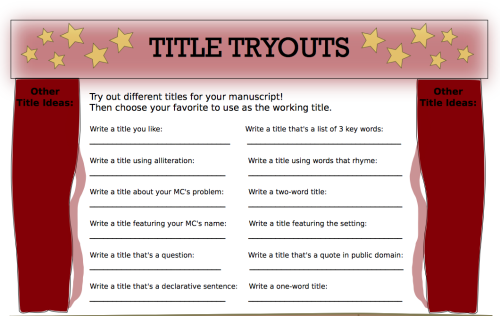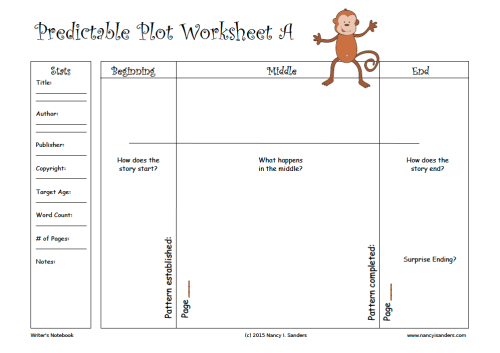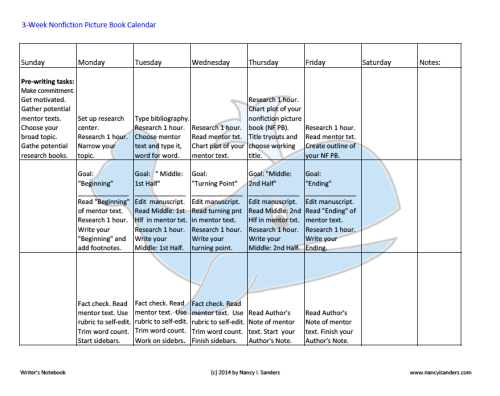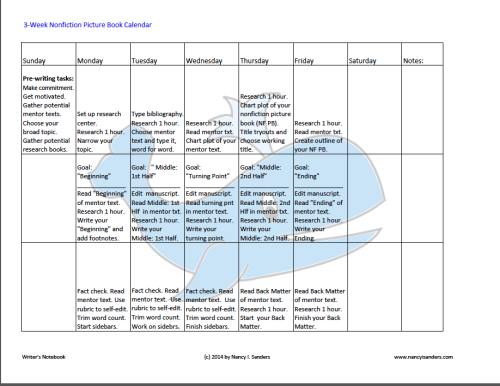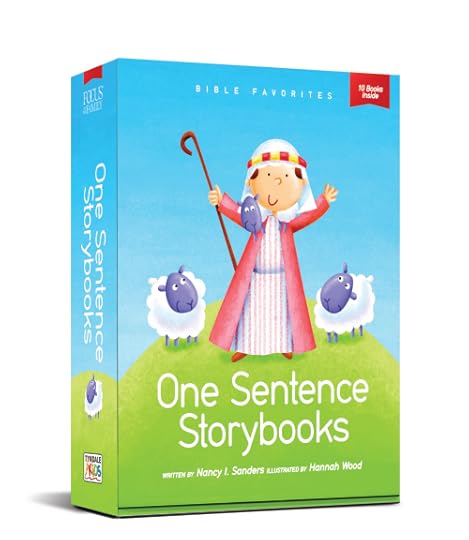Nancy I. Sanders's Blog, page 49
February 6, 2015
Write a NF Book in Just 3 Weeks: Week 1
Are you ready to roll up your sleeves for today’s writing adventure?
Once again, we’re logging in another chunk of research.
Then go ahead and sit down and read over your mentor text again. I always love to start many of my writing sessions out by reading my mentor text (or a portion of it if it’s a longer book).
For the third and final task for today, let’s create an outline for our manuscript.
If we were working on a much more involved nonfiction book, this could be a more involved task. You’ll find a handy outline form to fill in on my site if you’re going this route.
However, if you’re using SNOW as your mentor text or a similar book from Kaeden, this means we’re basically brainstorming what we want to include in our Table of Contents.
So if we were creating an outline for a book on snow, using SNOW for example, here’s what our outline would look like (you can choose to include the pages or not at this point since our book is at such a basic level with one new topic per page):
Tree���4
Car���5
Fence���6
Sidewalk���7
Patio���8
Roof���9
Slide���10
Ground���11
Playhouse���12
Me���13
Everywhere���14
Okay…let’s put on our thinking caps and brainstorm exactly which topics we want to cover in our story.
Have fun!
Filed under: Beginning Readers, Nonfiction, Picture Books

February 5, 2015
Write a NF Book in Just 3 Weeks: Week 1
Today we’re researching again.
For my first days of research, I just read through all the picture books I collected from the library. Now I’m ready to go back through and do some serious notetaking.
How are you managing your research?
Today’s also the day to sit down and plot your own nonfiction picture book. At first, you might not be sure what to choose. Just sit with your research books and use the PREDICTABLE PLOT WORKSHEET A to plan how you want your story to start.
Determine the pattern you want to establish such as “Snow is on the tree.”
Decide if you want to follow that pattern all the way through or if you want to change it one or more times. (See CATS for an example of one pattern change in a predictable plot.)
Mark this note on your plot chart and determine where you want this change to occur if you do choose to use it.
Brainstorm ideas for how you want your story to end. SNOW doesn’t have much of a surprise ending, so you might want to be thinking of a stronger way to end your story.
After you chart your story on the plot chart, you’re ready to choose a great title.
Once again, CLICK HERE to visit my site where I have a chart you can download to brainstorm various titles you might want to use for your story. Choose your favorite one!
Filed under: Beginning Readers, Nonfiction, Picture Books

February 4, 2015
Book Review: Psalm 23
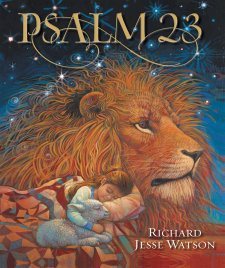
Psalm 23
Illustrated by Richard Jesse Watson
Summary
This 22-page board book is perfect for little ones to hold. Using the King James Version of the Bible for the text of the 23rd Psalm, artist Richard Jesse Watson illustrates each verse of this Psalm in vibrant colors.
The opening, “The Lord is my shepherd, I shall not want,” shows a close-up of a content lamb in the arms of his shepherd.
“He restoreth my soul,” shows a little girl looking lovingly into a happy lamb’s face.
“Yea, though I walk through the valley of the shadow of death, I will fear no evil,” portrays a modern-day woman with large gold earrings and gold necklace as an angel with large wings that are a covering for a little boy and girl and two lambs.
“Surely goodness and mercy shall follow me all the days of my life,” has a field full of flowers and sweet toddlers. Lambs frolic through the grass while older children fly kites.
What I Like
One of my favorite illustrations in this book is the cover. This same illustration is featured inside the book as the art for the last line of the Psalm. I love the majestic lion watching over the sleeping child with a lamb snuggled in her arms. There are so many images of happy lambs and sweet children and loving shepherds that the art conveys a powerful and precious message. I’m also glad that the KJV is used as I think this will be a nice way to teach a toddler and preschooler to memorize this beloved Psalm. I also like how the entire Psalm is featured altogether on the last page of the book.
-Thanks, BookLook Bloggers for another wonderful free book in exchange for my honest review!
Filed under: Book Review

Write a NF Book in Just 3 Weeks: Week 1
I hope you’re enjoying our adventure!
As I’ve been reading my research books each day so far, I’m reminded once again how it really helps me feel more confident as a writer when I take the time to include a steady diet of research.
I hope you’re feeling the same way.
Last time I wrote my nonfiction book for Kaeden Books, I used The Birdfeeder as my mentor text. This time, I’ve chosen Snow. Please feel free to choose it as your own mentor text as well if you want. I felt it suited my topic nicely. Plus I like how it has a different topic on each different page yet keeps a very similar sentence structure going throughout. The one drawback is that we can’t see the very last page of the story, but since the Table of Contents lists the last page as “Everywhere,” we can be pretty sure that the last page of the story is:
Snow is everywhere!
Along with our research and reading our mentor text, today is the day we chart the plot for our mentor text. This will help us chart the plot of our own text tomorrow.
If you would like to use a chart I’m using, CLICK HERE to visit my site where I post various charts and worksheets I use in my own writing. Scroll down to the heading, CHARTS AND WORKSHEETS TO GET ORGANIZED FOR SUCCESS.
If you are using SNOW as your mentor text or one of the simple, predictable texts Kaeden publishes, print out the PREDICTABLE PLOT WORKSHEET A. This is the chart you can use any time you chart a published book or your own manuscript that is based on a predictable plot. (CLICK HERE for tips on working with PREDICTABLE PLOTS.)
If for some reason you want to write a manuscript that uses a story arc, however, print out the BASIC PLOT WORKSHEET A to use instead.
Let me know if you have any questions about how to use either of these charts to plot your mentor text today.
Have fun!
Filed under: Beginning Readers, Nonfiction, Picture Books

February 3, 2015
Write a NF Book in Just 3 Weeks: Week 1
There are three main tasks to focus on today as you’re working on the first draft of your nonfiction picture book.
1) Type up your bibliography.
Many writers save this for last, but I like to do this early in my journey when I’m working on a new book. I just take a stack of books I want to use in my research and build the bibliography right at the start. Often I include a list of all the children’s books I’ve gathered from the library because even if I don’t actually use them for my research, they make great resources to include in the back if I list “Student Resources” or I can recommend them on a website I build if the book gets published. For more tips on creating your bibliography, CLICK HERE.
2) Research 1 hour.
It will really make the actual writing process go much, much better if you pack in at least 1 hour of research every day this week (and next!).
3) Choose Mentor Text
This is the day to decide which nonfiction picture book will be your mentor text. This will be the one you study to learn specific skills about creating a nonfiction picture book. For tips on finding one of Kaeden Book’s nonfiction titles to use as your mentor text, CLICK HERE.
Once you’ve chosen it, type it out word for word. There are so many benefits to doing this.
A) It trains your brain for writing this exact type of book.
B) It helps build your stamina to write this word count when you sit to type it out in one sitting.
C) You can use this Word document to check stats quickly for paragraphs, sections, or pages in the published book for info such as word count and readability level.
Filed under: Beginning Readers, Nonfiction, Picture Books

February 2, 2015
Write a NF Book in Just 3 Weeks: Week 1
MONDAY, our first day
SET UP YOUR RESEARCH CENTER
The fun part about setting up your research center is that you get to be as creative with this as you want or your circumstances provide. Sometimes I make a portable research center and put my research books in tote bags to I can carry them wherever I plan to work. Sometimes I spread everything out on a 6-foot folding table I set up in our guest room. Sometimes I set up my research center on a shelf on the bookcase next to my desk. (CLICK HERE to read a funny post about one of our cats and his research center.)
For this time, I stacked my books on the top shelf of my desk. I had cleared it off recently and it was looking a little lonely, so now it’s filled with a couple piles of exciting books on my topic.
So have fun setting up your research center, too! Not only is it a lot of fun to see this all put together, it will help us focus and stay organized for the next three weeks.
RESEARCH 1 HOUR
After you’ve got your research center all set up, choose a book or two, and start reading! As you’re reading, focus on the goal of narrowing your topic. In other words, search for one gold nugget about your topic that you want to focus on. You want it to be a fresh and unique angle on your broad topic that also has great kid-appeal and will be of interest in today’s market, especially for a beginning reader you plan to submit to Kaeden Books. Jot down ideas as you research.
NARROW YOUR TOPIC
Now it’s time to actually choose one narrow topic to write about. If you have questions about that, just let me know!
(Follow the next 3 weeks of posts for more tips on how to use our calendar and write a brand new nonfiction early reader picture book in just 3 weeks.)
Filed under: Beginning Readers, Nonfiction, Picture Books

January 31, 2015
Mentoring Moments with Nancy
Welcome to Mentoring Moments!
From time to time some of you precious writers and fellow scribes e-mail me with questions and thoughts. It’s always so great to hear personally from so many of you!
I’ve decided to start this occasional column where I spend time answering some of these questions that come in. Hopefully, this will help each one of you to gain more confidence, more skills, and more success as you move forward in your writing journey.
Here’s the first question that we’ll talk about today:
Does word count matter in nonfiction? Are agents & publishers accepting nonfiction manuscripts longer than 500 words?
What a great question, don’t you agree? And so timely both in today’s market and with the nonfiction writing we’re doing right now here on my blog.
Here’s the short, direct answer:
Each publisher and each agent has their own preferences.
Let me explain more fully. My agent, for example, really wants me to keep my nonfiction picture book manuscripts less than 800 words because she tries to market them to the trade market. (The trade market includes the kinds of books you’ll find at a bookstore where parents will pick them up and buy them.)
On the other hand, if you are trying to write nonfiction to submit to the educational market, some publishers just want nonfiction manuscripts of 25-50 words for a kindergarten reading level where some publishers want 3,000-5,000 words in a nonfiction picture book manuscript for a 3rd or 4th grade reading level.
The best thing you can do is choose a mentor text, or current published nonfiction picture book. Make sure it was published in the last 3 years or so.
Count the number of words in this title. Often, you can find this information at a handy site, Renaissance Learning. For example, CLICK HERE to see the word count in my nonfiction picture book, D is for Drinking Gourd: An African American Alphabet. Isn’t that a whopper?!!! Just type in the title of the book you want to look up and it will show you its word count, too, if it’s listed on this site.
Once you know the word count of your mentor text, go ahead and make YOUR manuscript a similar length. Then when you submit this manuscript to a potential agent or to the publisher themselves, be sure to tell them that YOUR manuscript is similar in length to the title of your mentor text. Even agents who normally prefer a certain word count in a nonfiction manuscript might be open to looking at it if they understand that a certain publisher is publishing books of that same length.
Happy writing. (And counting!)
Thanks for joining me today in MENTORING MOMENTS WITH NANCY.
Filed under: Mentor Text, Mentoring Moments with Nancy, Nonfiction, Writing Tips

January 30, 2015
Write a NF Book in Just 3 Weeks: Calendars
I’ve posted two calendars at the site of my feline writing buddies, Writing According to Humphrey and Friends. Scroll down to the section marked CALENDARS, then download and print out both of them:
3-week Blank Calendar
3-week Nonfiction Picture Book Calendar
The 3-week Nonfiction Picture Book Calendar features the tasks I’m completing each day, Monday through Friday, for the next three weeks to write the first draft of my nonfiction picture book to submit to Kaeden Books. You can follow along, too, and get yours done as well!
The Blank Calendar is there for you to use if you want to rearrange some of the tasks to better suit your own personal schedule. For example, you may want to write on the weekend. Or you may have Monday, Wednesday, and Friday to write for 8 or 9 hours and not be available to write on Tuesday or Thursday. You can use the Blank Calendar to regroup the list of tasks to complete on the days that better fit your schedule.
The 3-week Nonfiction Picture Book Calendar
As you can see on this calendar, the very first Sunday lists pre-writing tasks that are important to take before you begin your writing journey.
1. Make a commitment to follow through for the next three weeks to write the first draft of your nonfiction early reader picture book from beginning to end.
2. Do what it takes to get motivated to sit down and actually write!
3. Gather a stack of potential mentor texts, current nonfiction picture books that you want YOUR picture book to look, sound, and feel like.
4. Choose the broad topic you want to write about. My broad topic is animal homes. I haven’t yet narrowed the topic on what exactly I’ll be writing about, but I chose this broad topic so I can get started on my research.
5. Gather in a stack of potential research books on your broad topic, both books for adults and children’s books.
My stack of research books arrived at my library a couple days ago…30 in all! My husband Jeff helped me lug them all out to the car. I can hardly wait to dig into them.
If you haven’t had time to order in any books and want to get started on Monday along with the rest of us, just plan an excursion to your local library this weekend and grab all the books you can find on your broad topic to bring home. Don’t worry if you don’t quite know what to write about yet. We’ll talk about that in my post on Monday so stay tuned!!!!!
And if you have any questions, feel free to ask!
Filed under: Beginning Readers, Calendars, Nonfiction, Picture Books

January 28, 2015
Free Book Giveaway!
Exciting news!!! A blogger and book reviewer is hosting a contest for a free giveaway of my newest set of books, One Sentence Storybooks!!!
Hop on over to the blog of Victoria Stankus for your chance to win this set of brand new books. They make a great gift for a young reader in your family, for a baby shower, or for your local church Sunday School class. Great for a special gift on Resurrection Sunday, too!
You have to hurry to enter the contest, though. It ends in a couple of days!
Filed under: Bible Stories, Book Review, Free Giveaway

January 27, 2015
Book Review: Little Bunny’s Bible
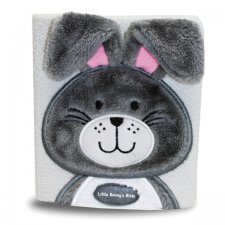
Little Bunny’s Bible
A Bunny to Hug, a Bible to Love
by P.J. Lyons
Art by Melanie Mitchell
Summary
Little Bunny’s Bible is a sturdy board book that is covered with a soft plush cover including an adorable bunny on the front with ears that are loose and can be held in little fingers. Creation, Noah, Daniel, Jonah, the Birth of Christ, the Lost Lamb parable, Feeding the 5000, and the death and ascension of Jesus are the passages that are included in this Bible. The rhyming text is playful, fun, and bursting with kid-appeal. The art is sweet, precious, and comforting. What a great Bible to give as a gift for Easter or as a baby shower gift!
What I Like
As a writer myself, I especially like how much fun the words are in these stories. For example in Jonah Learns a Lesson, one part says:
God sent a storm to Jonah’s ship,
and Jonah took an ocean dip.
A fish ate Jonah in one slurp.
He landed in a big fish burp.
Kids just love language like that! What a great read-aloud Bible. Each story is short but complete with a meaningful message as well–perfect for little listeners. The Scripture reference is included underneath each title.
And the art is absolutely adorable!!!! Kids will want to hug this cuddly book and will feel a natural love for God’s Word.
-Thanks, BookLook Bloggers for another wonderful free book in exchange for my honest review!
Filed under: Book Review

Nancy I. Sanders's Blog
- Nancy I. Sanders's profile
- 76 followers


